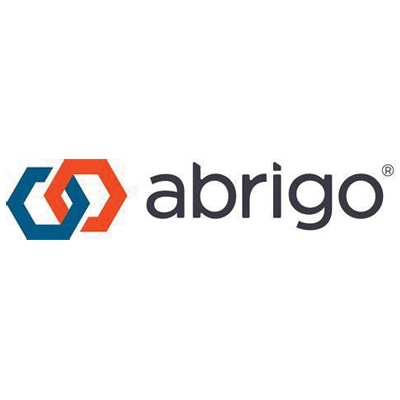A Framework for AI Opportunity in Financial Institutions
AI is no longer a future-facing technology — it’s a present-day differentiator. Across banking, AI is reshaping how financial institutions operate, compete and deliver value. From marketing to compliance, the most promising AI use cases in banking help organizations improve decision-making, reduce operational risk and grow more efficiently. This article explores a sample of opportunities where AI creates the most value today by showing major areas of banking where artificial intelligence (either predictive or generative) can be useful. It also explains how financial institutions can safely begin or accelerate their AI journey and
Examples of Current AI Applications Across Banking
There are two primary forms of AI driving transformation: predictive AI, which forecasts outcomes and detects patterns, and generative AI, which creates new content from existing data sources.
Current applications of artificial intelligence across banking fall into six core areas of opportunity, described below along with examples of how financial institutions are already benefitting from AI on these fronts:
- Marketing and Sales
AI enables personalized engagement and smarter targeting for bank and credit unions’ marketing and sales.
- Predictive models forecast customer lifetime value.
- Generative tools create hyper-personalized messaging and offer recommendations.
- AI segments audiences for cross-sell campaigns and streamlines onboarding.
For example, a large national bank reported that personalizing content on its mobile phone apps helped increase engagement rates by 25%.
- Prospecting and Onboarding
AI can reduce friction in early-stage customer interactions for banking services.
- Automate document verification and identity validation.
- Prepopulate onboarding forms and streamline KYC workflows.
- Use chatbots for initial data collection and customer guidance.
Costs to verify investment bank clients are down 40% where AI is being deployed across the workflow, according to a large national bank.
- Credit Risk Underwriting and Review
AI enhances accuracy and speed in credit decisions, helping lenders make good decisions quickly.
- Predictive models analyze cash flow, credit scores, and risk thresholds.
- Generative AI assists in drafting credit memos and narrative summaries for loan reviews.
- Real-time data integration supports more holistic, dynamic underwriting.
A bank in Texas reduced its commercial loan process for certain loans from two weeks to three to five days using Abrigo’s loan origination for smaller commercial loans, which automates decisioning and features AI-powered loan scoring. And Abrigo’s Loan Review Assistant allows credit risk review staff to evaluate credit quality and document insights in minutes rather than days.
- Operations
Financial institutions can improve back-office efficiency with AI automation.
- AI routes payments, classifies documents, and extracts insights.
- Automated financial spreading saves hours of manual entry.
- Collections strategies are optimized through borrower-level pattern recognition.
NVIDIA’s latest survey of financial institutions’ use of AI found that more than 60% of respondents credited AI with helping reduce annual costs by 5% or more.
- Customer Support
With artificial intelligence, financial institutions boost service quality while scaling support teams.
- Chatbots answer common questions and reduce call center volume.
- AI listens to and analyzes call transcripts to coach agents and spot risk indicators.
- Personalized engagement improves retention and satisfaction.
One large national bank reported that AI capabilities reduced calls into the IT service desk by more than 50%. Similar support improvements can benefit clients.
- Risk and Compliance
Both predictive AI and generative AI enable institutions to meet regulatory demands with precision and agility.
- Alert narratives and ongoing due diligence tasks can be automated.
- AI helps detect fraud patterns across transactions.
- Compliance checks are embedded into loan review and audit workflows.
A Texas-based bank using Abrigo’s AI-driven check fraud detection to identify fraudulent checks before they are cashed found that within just two months, the bank identified and prevented over $377,000 in fraudulent check transactions.
Altogether, these banking AI use cases drive measurable business benefits: faster loan decisions, higher operational efficiency, improved accuracy and reduced churn.
How To Prioritize Projects When Implementing AI
The range of available AI use cases in banking can feel overwhelming. But successful institutions typically begin with focused, high-impact projects that align with their data readiness and staffing capacity.
To start:
- Partner with trusted providers who understand regulatory frameworks and can integrate AI into existing systems. Abrigo prioritizes data security and privacy by developing AI technology with stringent data protection measures, using encrypted data environments and robust access controls to secure client data. Make sure that any vendors you choose have similar controls in place. You may choose to consider vendors that specifically work with financial institutions so that you can be sure their solutions fully comply with banking regulations. Vendors should be continuously monitoring regulatory landscapes to ensure their solutions meet legal and regulatory requirements.
- Experiment with pilot programs such as automating credit memos or onboarding flows to introduce AI one process at a time. Identify and prioritize low-risk, high-value pilot projects, and make sure that leaders from across the organization are united when assessing the feasibility, risks and intended outputs before starting a project. Once an AI tool is adopted, conduct ROI analysis regularly to make sure the new process is working as intended.
- Educate your team on what AI is and what it isn’t to build buy-in across departments. While AI automates certain tasks, it primarily augments the capabilities of banking staff by allowing them to focus on more complex and strategic activities. Done well, this enhances job satisfaction and productivity. Make sure staff are well-trained and emphasize that a human-in-the-loop is always necessary to keep AI processes running smoothly.
From AI’s Value Potential to AI’s Value Creation
Long-term AI success requires thoughtful governance, clean data inputs and strategic planning. With the right use cases and the right partners, banks and credit unions can unlock the true value of AI: accelerating growth, reducing risk and improving every interaction.








